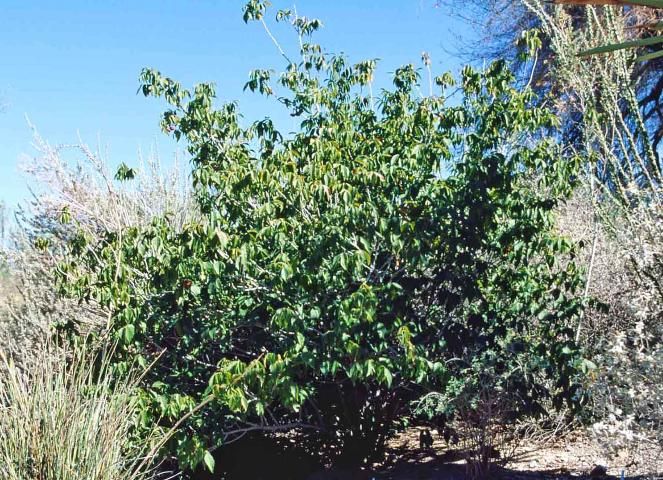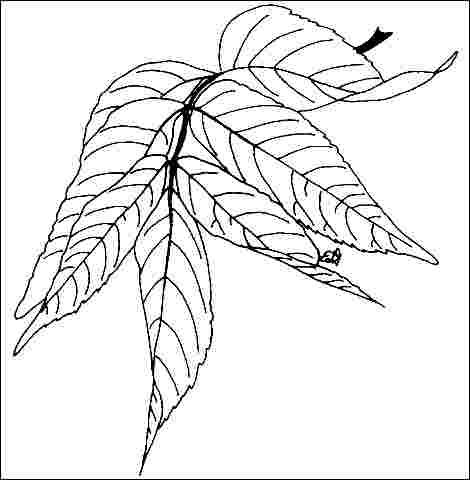Introduction
Mexican buckeye is a native North American deciduous tree or large shrub which reaches 20 to 30 feet in height with a spread of 20 feet. The spreading, irregular crown is composed of many small, upright branches which along with the persistent seedpods and smooth, mottled gray/brown bark helps make Mexican buckeye an attractive feature in the winter landscape. The pinnately compound, dark green leaves turn a beautiful bright yellow color in fall before dropping. In spring the tree is also quite colorful when the showy, fragrant, purple blooms appear, either just before or with the new, fresh leaves. The showy, three-pod seeds contain sweet seeds which are poisonous. It is reported that children in west Texas have used the round seeds as a substitute for marbles. The seedpods persist on the bare branches throughout the winter.

Credit: Ed Gilmany, UF/IFAS
General Information
Scientific name: Ungnadia speciosa
Pronunciation: ung-NAW-dee-uh spee-see-OH-suh
Common name(s): Mexican buckeye
Family: Sapindaceae
USDA hardiness zones: 7A through 9A (Fig. 2)
Origin: native to North America
Invasive potential: little invasive potential
Uses: deck or patio; container or planter; specimen; highway median
Availability: not native to North America

Description
Height: 20 to 30 feet
Spread: 15 to 20 feet
Crown uniformity: irregular
Crown shape: oval
Crown density: open
Growth rate: moderate
Texture: fine
Foliage
Leaf arrangement: alternate (Fig. 3)
Leaf type: odd-pinnately compound
Leaf margin: crenate, serrulate
Leaf shape: ovate, lanceolate
Leaf venation: pinnate
Leaf type and persistence: deciduous
Leaf blade length: 2 to 4 inches
Leaf color: green
Fall color: yellow
Fall characteristic: showy

Flower
Flower color: pink
Flower characteristics: showy
Fruit
Fruit shape: oval, round
Fruit length: 1 to 3 inches
Fruit covering: fleshy
Fruit color: brown
Fruit characteristics: does not attract wildlife; showy; fruit/leaves not a litter problem
Trunk and Branches
Trunk/bark/branches: branches don't droop; not showy; typically multi-trunked; thorns
Pruning requirement: needed for strong structure
Breakage: resistant
Current year twig color: brown
Current year twig thickness: thin
Wood specific gravity: unknown
Culture
Light requirement: full sun, partial sun, or partial shade, shade tolerant
Soil tolerances: clay; sand; loam; alkaline; acidic; well-drained
Drought tolerance: high
Aerosol salt tolerance: unknown
Other
Roots: not a problem
Winter interest: yes
Outstanding tree: yes
Ozone sensitivity: unknown
Verticillium wilt susceptibility: unknown
Pest resistance: free of serious pests and diseases
Use and Management
This small tree is probably best used as a specimen planted for the coarse leaf texture and striking fall color display. It would make a nice tall component in a shrub border or other grouping of shrubs. The corner of a large building could be buffered or softened by this tall shrub or small tree.
Mexican buckeye should be grown in full sun or partial shade on well-drained soil and prefers moist, alkaline soil. Established trees are quite drought-tolerant.
Propagation is easily done by seed.
Pests and Diseases
No pests or diseases are of major concern.